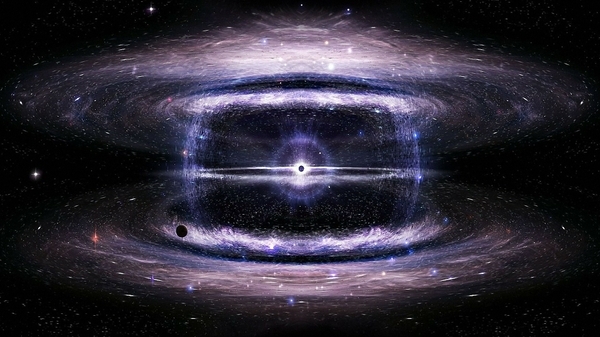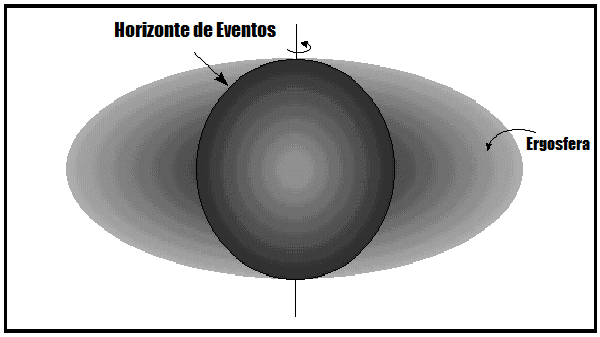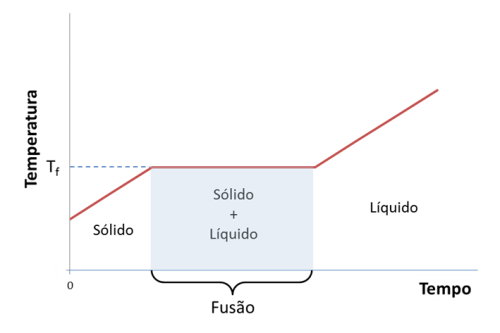A black hole is a spatial phenomenon of extremely high proportions (usually larger than the sun) and with mass extremely compact, resulting in a gravitational field so strong that no particles or radiation manages to get out.
Since even light is sucked in, the presence of a black hole is evidenced by observable gravitational consequences. in its surroundings, especially by the orbit changes of nearby celestial bodies, which start to be attracted to the hole black.
In addition, astronomers and scientists claim that a black hole can be observable because of its light emission.
First image of a black hole
 First image of a 40 billion-kilometer-diameter black hole located in Galaxy M87, 50 million light-years from Earth. Photo: Horizont Telescope event.
First image of a 40 billion-kilometer-diameter black hole located in Galaxy M87, 50 million light-years from Earth. Photo: Horizont Telescope event.
The first image of a black hole was released in April 2019 at a conference in Brussels. It was found, after 2 years of observation and research, by the international project called Event Horizon Telescope (EHT), which brings together nearly a dozen radio telescopes in the world, from Europe to the Pole South.
In the image, the only visible part of the black hole is the golden circle, called by astronomers "event horizon" (event horizon in Portuguese) or "point of no return."
At the center of the event horizon, there is an incalculable mass density, called singularity. The gravity of this point is so strong that no surrounding objects can escape.
In theory, only something moving faster than the speed of light could resist the gravitational field of a black hole. For this reason, it is not possible to know for sure what happens to the matter that is sucked up.
How does a black hole form?
Black holes are formed from gravitational collapses of celestial bodies. These phenomena occur when the internal pressure of a body (usually stars) is insufficient to maintain its own mass. So when the star's core collapses due to gravity, the celestial body explodes releasing huge amounts of energy in an event known as supernova.
 Representative image of a supernova.
Representative image of a supernova.
During a supernova, in a fraction of a second, the entire mass of the star is compressed into its core as it moves to the approximately 1/4 the speed of light (in fact, it is at this very moment that the heaviest elements in the universe are created).
Then the explosion will give rise to a neutron star or, if the star is big enough, the result will be the formation of a black hole, whose astronomical amount of concentrated mass creates the aforementioned gravitational field. In it, the escape velocity (the velocity necessary for some particle or radiation to resist the attraction) must be, at least, greater than the speed of light.
How big is a black hole?
Black holes come in different sizes. The smallest known to science are called primordial black holes and are believed to be the size of an atom but with the total mass of a mountain.
Medium black holes (whose mass is up to 20 times the total mass of the sun) are called stellar. In this category, the smallest black hole discovered is 3.8 times the solar mass.
The largest cataloged black holes are called supermassives, often found at the center of galaxies. As an example, at the center of the Milky Way is Sagittarius A, a black hole with a mass equivalent to 4 million times the mass of the sun.
So far, the largest known black hole is called S50014+81, whose mass is forty billion times the mass of the sun.
Types of black holes
German theoretical physicist Albert Einstein formulated a set of hypotheses related to gravitation that served as the basis for the emergence of modern physics. This set of ideas was named General Relativity Theory, in which the scientist made several groundbreaking observations about the gravitational effects of black holes.
For Einstein, black holes are “deformations in space-time caused by the massive amount of concentrated matter”. His theories promoted rapid progress in the area and enabled the classification of different types of black holes:
Schwarzschild Black Hole
Schwarzschild black holes are those that do not have an electrical charge and also do not have angular momentum, that is, they do not rotate around their axis.
Kerr black hole
Kerr black holes have no electrical charge but rotate around their axis.
Reissner-Nordstrom black hole
Reissner-Nordstrom black holes carry an electrical charge but do not rotate around their axis.
Kerr-Newman Black Hole
Kerr-Newman black holes carry an electrical charge and rotate around their axis.
In theory, all kinds of black holes eventually become Schwarzschild (static and uncharged) black holes when they lose enough energy and stop rotating. This phenomenon is known as Penrose Process. In such cases, the only way to differentiate one Schwarzschild black hole from another is by measuring its mass.
Structure of a black hole
Black holes are invisible since their gravitational field is inescapable even for light. Thus, a black hole has the appearance of a dark surface from which nothing is reflected and there is no evidence of what happens to the elements that are sucked into it. However, starting from the observation of the effects they cause in their surroundings, science structures black holes into event horizon, singularity and ergosphere.
Event horizon
The boundary of the black hole's gravitational field from which nothing is observed is called the event horizon or point of no return.
 Graphic representation of an event horizon, provided by NASA, in which a perfect sphere is observed from which no light is emitted.
Graphic representation of an event horizon, provided by NASA, in which a perfect sphere is observed from which no light is emitted.
Despite being, in fact, just gravitational consequences, the event horizon is considered part of the structure of a black hole because it is the beginning of the observable area of the phenomenon.
Its shape is known to be perfectly spherical in static black holes and oblique in rotating black holes.
Because gravitational time dilation, the influence that the black hole's mass exerts on spacetime causes the event horizon, even outside its range, to have the following effects:
- To a distant observer, a clock close to the event horizon would move more slowly than one farther away. Thus, any object being sucked into the black hole would appear to slow down until it appears to be frozen in time.
- For a distant observer, the object approaching the event horizon would assume a reddish hue, a consequence of physical phenomenon known as redshift, as the frequency of light is reduced by the hole's gravitational field black.
- From the object's point of view, time would pass at an accelerated rate for the entire universe, while for you, time would pass normally.
Singularity
The center point of a black hole, where the star's mass has become infinitely concentrated, is called a singularity, which little is known about. In theory, the singularity contains the total mass of the collapsed star, plus the mass of all bodies sucked up by the gravitational field, but it has no volume or surface.

Ergosphere
The ergosphere is a zone that surrounds the event horizon in rotating black holes, in which it is impossible for a celestial body to remain stationary.

Also according to Einstein's relativity, any rotating object tends to drag spacetime close to it. In a rotating black hole, this effect is so strong that it would require a celestial body to move in the opposite direction at a speed greater than the speed of light to remain stationary.
It is important not to confuse ergosphere effects with event horizon effects. The ergosphere does not attract objects with the gravitational field. Thus, anything that comes in contact with it will only be displaced in space-time and will only be attracted if it crosses the event horizon.
Stephen Hawking's Black Holes Theories
Stephen Hawking was one of the most influential physicists and cosmologists of the 20th and 21st centuries. Among his numerous contributions, Hawking solved several theorems proposed by Einstein that contributed to the theory that the universe began in a singularity, further reinforcing the call Big Bang Theory.
Hawking also believed that black holes are not completely black but emit small amounts of thermal radiation. This effect was known in physics as Hawking radiation. This theory predicts that black holes would lose mass with the radiation released and, in an extremely slow process, would shrink until they disappeared.
See too:
- Theory of relativity
- Gravity
- big Bang

